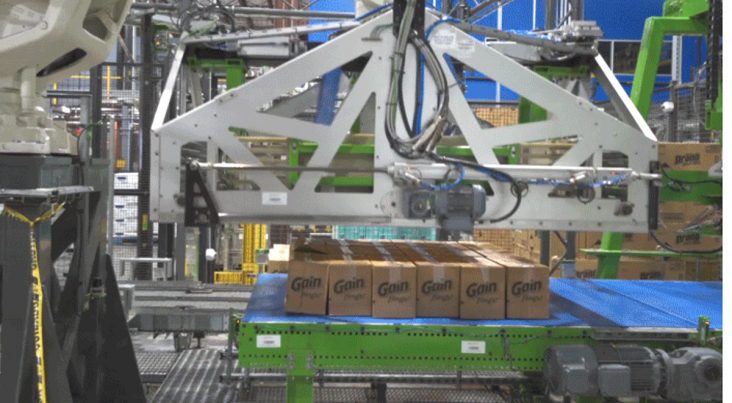Walmart to expand partnership with Symbotic for supply chain efficiency
by July 14, 2021 3:01 pm 1,791 views

(photo courtesy of Walmart)
Walmart said Wednesday (July 14) it plans to place Symbotic robotic technology in 25 of its 42 regional distribution centers (RDC’s). The retail giant did not disclose the cost but it’s part of the company’s $14 billion budgeted for this fiscal year for supply chain automation and other areas of the business.
Joe Metzger, executive vice president of supply chain operations at Walmart U.S., said the retailer has tested Symbotic technology in its Brookville, Fla., distribution center since 2017. He said advancements in the technology from Wilmington, Mass.-based Symbotic now allow for automated sorting, stack and store, retrieval and packing freight onto pallets.
“We’re using automation to revolutionize intake, increase accuracy and change how freight is handled at our regional distribution centers (RDCs),” Metzger said. “This high-tech automation system will fundamentally alter how products get into stores.”
Metzger said product now arrives at RDCs and is either cross-docked where it is sent to stores or warehoused until it is needed. Products are moved or stored manually by a human workforce driving forklifts. When it’s time for the store-bound truck to be refilled, someone is tasked with packing the 53-foot trailer in what Metzger calls “a human game of Tetris for transit.” When the truck arrives at the store, employees unload the merchandise into the backroom of a store. Items are then scanned into the system and sent out to the sales floor.
Walmart said the Symbotic technology uses a complex algorithm to store cases like puzzle pieces using high-speed mobile robots. Metzger said the bots move much faster and with more precision than in the manual process. The system also uses dense modular storage, which he said expands building capacity for high speed robots to then palletize and organize the incoming freight.
“It creates custom store- and aisle-ready pallets, which take the guesswork out of unloading trucks,” he said.
Walmart said this automation could be a game-changer when it’s scaled across its supply chain. The end goal is to get products out to shelves faster and remove some of the more laborious jobs in RDCs and stores to allow employees to spend more time serving customers, Metzger said.
Annibal Sodero, professor of supply chain and logistics at Ohio State University, said investments in supply chain efficiency within warehouses are made so retailers can use lower-cost transportation modes in the final mile. He said automation of warehouse processes is nothing new in retail as Amazon purchased Kiva System robotics in 2012 for $775 million because it saw the value of automating warehouse operations. He said it all boils down to the final mile and trying to trim down that 27% to 30% cost of the shipping total.
Sodero said the investment by Walmart is also needed because of the national workforce shortage that continues to worsen. Sodero said robotics technology is expensive because of the value Amazon placed on it in 2012, but said retailers have no choice but to automate supply chain functions where they can. He said Amazon and Alibaba have a huge head start with supply chain automation and Walmart is still playing catch-up.
